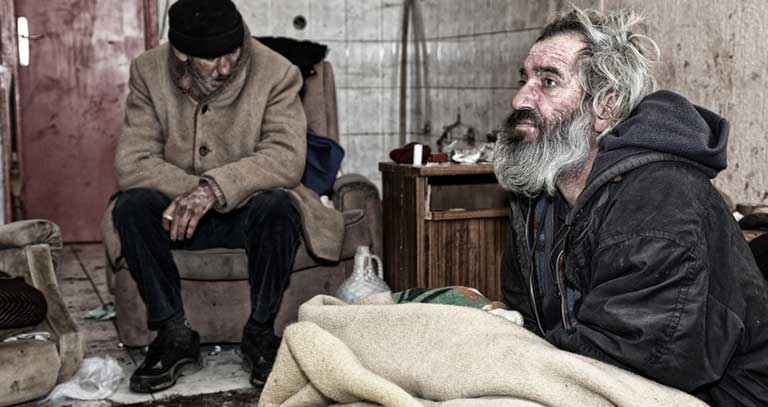There is a pressing need for solutions to homelessness among the elderly
WASHINGTON, DC, July 14 – According to a U.S. government study 1.5 million Americans are considered to be homeless. And, while efforts are underway, and in some cases making progress toward reducing the ravages of homelessness, more needs to be done, according to Dan Weber, president of the Association of Mature American Citizens.
And, he says, there needs to be a special focus on the population of elderly men and women with no permanent access to shelter. It’s hard enough growing old in the comfort of your own home, but imagine how much more difficult and dangerous it is to age on the streets.
“Bear in mind that the homeless are included in the 10,000 Americans who turn 65 years of age each day. So, there is a pressing need for specific solutions to homelessness among the elderly and the need grows more dire with each and every passing day. The issue is particularly poignant for AMAC since reportedly more than 50% of those living on the streets are elderly. The burden of living hand-to-mouth on the streets is particularly difficult for them since they are more susceptible to injuries and illnesses as they age. Efforts to deal with the problem are valiant but thus far have not been able to cope as is evidenced by the growing waiting lists at shelters,” says Weber.
Sara Bloomberg, a freelance journalist in San Francisco, recently reported that in 2014 wait times for access to temporary shelter for the homeless in that city averaged 26 days and that currently the wait time has more than doubled. Bloomberg noted that among those recently seeking shelter was a 97-year-old individual and three who are in their 80s.
Sam Dodge, deputy director of the San Francisco Department of Homelessness, told her in an interview that “we do have some carve-outs within our shelter system for elderly and veterans.”
But, says Weber, a study conducted by the University of California found that in 27 years ago only 11 percent of the homeless population were older Americans, but that now more than half are age 50 or older so carve-outs are not the answer.
He praised the efforts of officials in municipalities across the country to deal with the needs of those who have no choice but to live on the streets.
“But, as any of us with aging parents or grandparents know, the older you are, the more help you need. One study of homeless individuals whose average age was 58 showed they have more trouble with such simple tasks as getting dressed, keeping themselves clean and eating properly than 80 year olds living in a proper home environment. Bear in mind that as we age we can become more forgetful. We don’t see as well as we used to. We can become depressed more easily and we can forget to take medications. And, we become more susceptible to physical injuries,” Weber points out.
While temporary shelters fill an important immediate need, there is widespread agreement that we need to design solutions that provide for permanent solutions for those who otherwise have no choice but to live on the streets.
Says Weber, “we need facilities that offer not only a roof over their heads but supportive services, as well. Shelters are a partial solution at best. They provide bunk beds and shared toilet facilities. That’s good as far as it goes, but there is overwhelming evidence that such environments can actually increase the risk of injury and ill-health. Furthermore, many shelters require that residents must vacate those shelters during the day. And, that can lead to further dangers as they have no choice but to wander alone on the streets.”
Weber cites the work of the Hearth program in Boston. Hearth was established to find ways of preventing and ending elder homelessness. Its focus is on identifying older individuals who are currently homeless or are at serious risk of becoming homeless. It seeks to provide “permanent and affordable supportive” housing.
The AMAC chief called on city officials across the country to seek solutions that offer security, permanence and hope for seniors who can’t fend for themselves. “Hearth and programs like it should be the models for municipalities – particularly bigger cities where aging homeless populations are growing at too rapid a pace. What use is it to provide so-called temporary, not so safe havens that exacerbate the distress, depression and physical harm suffered by elderly American men and women, many of whom served valiantly in the armed services?”
(The Association of Mature American Citizens [http://www.amac.us] is a vibrant, vital senior advocacy organization that takes its marching orders from its members. We act and speak on their behalf, protecting their interests and offering a practical insight on how to best solve the problems they face today.
Live long and make a difference by joining us today at http://amac.us/join-amac).



